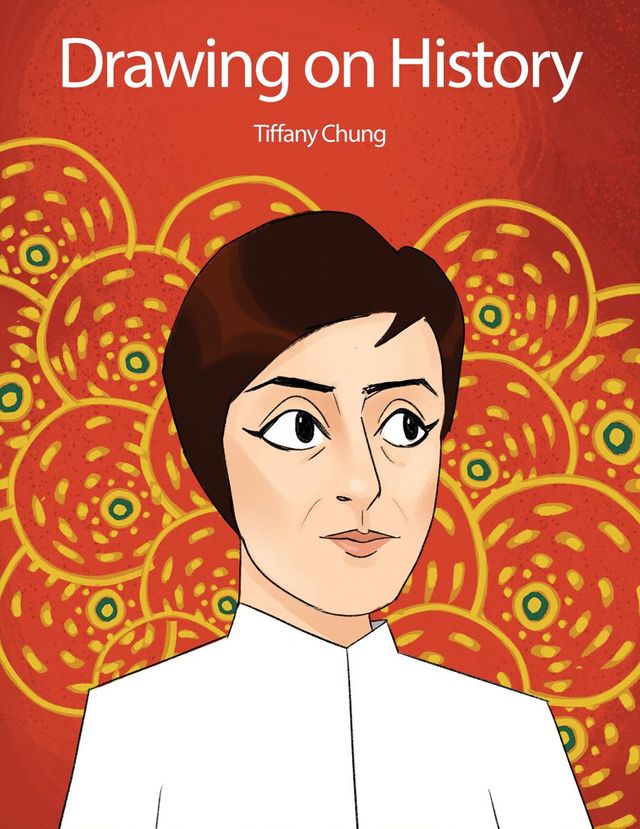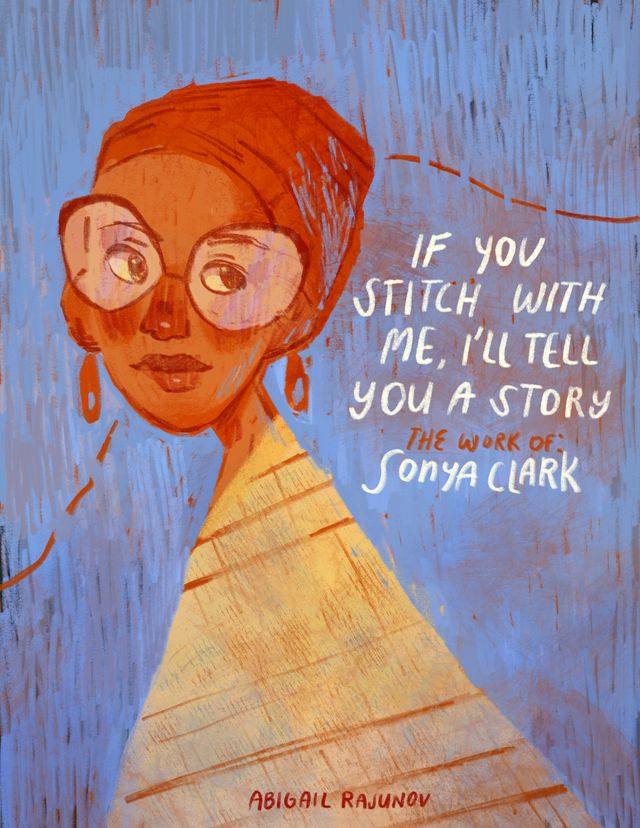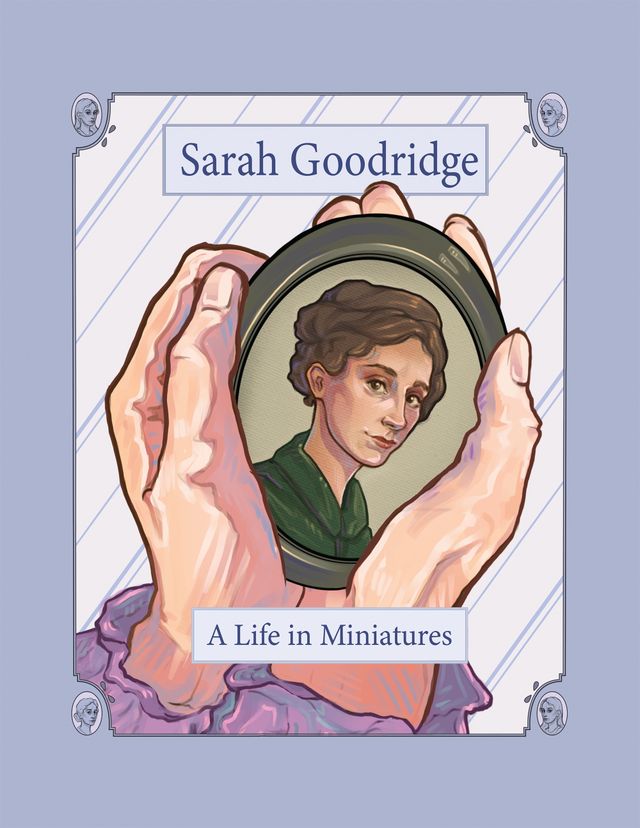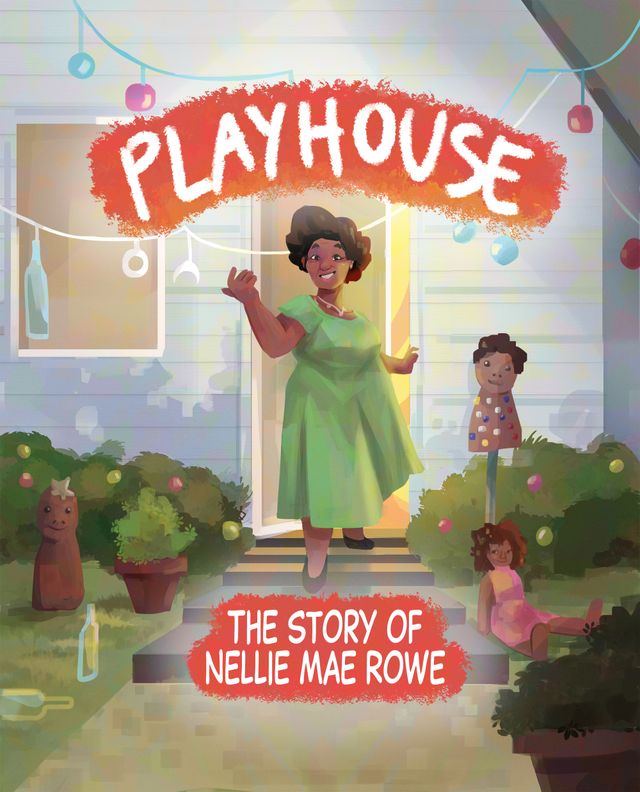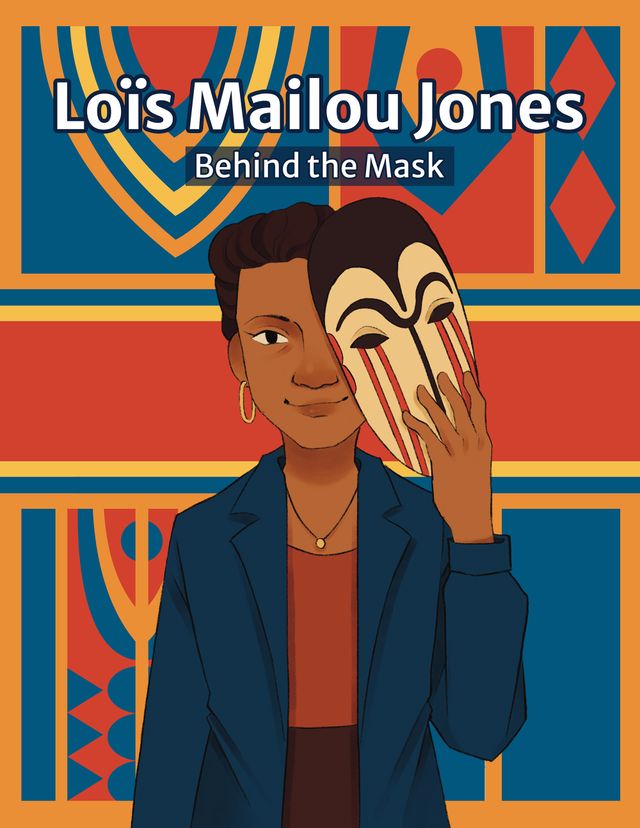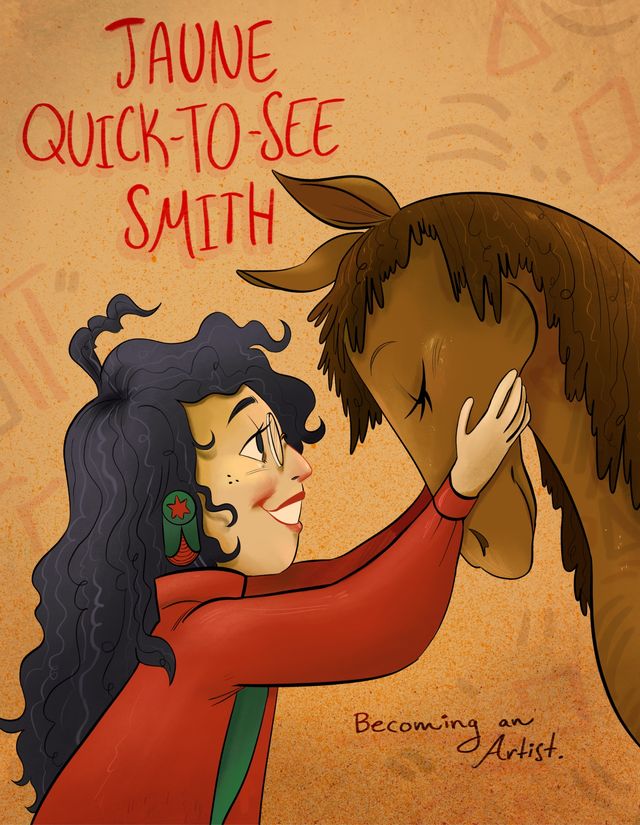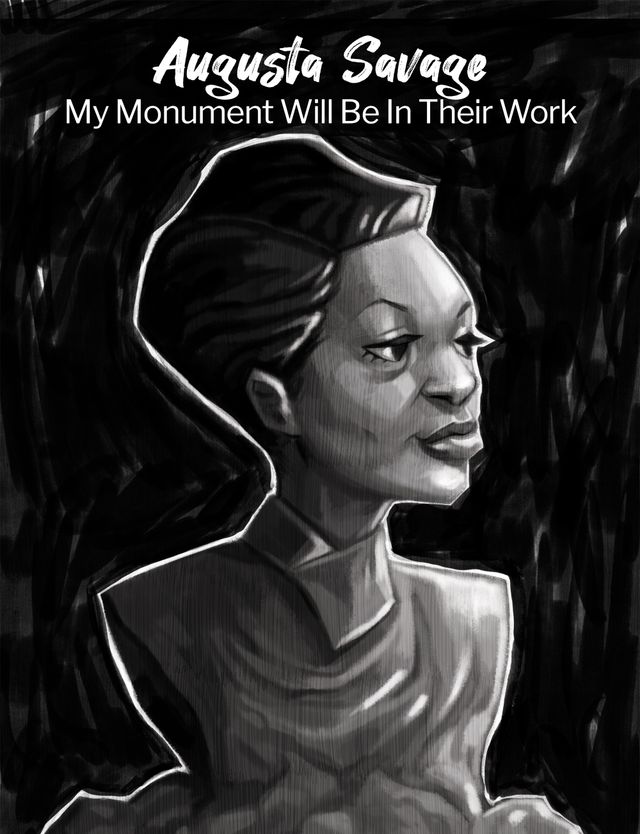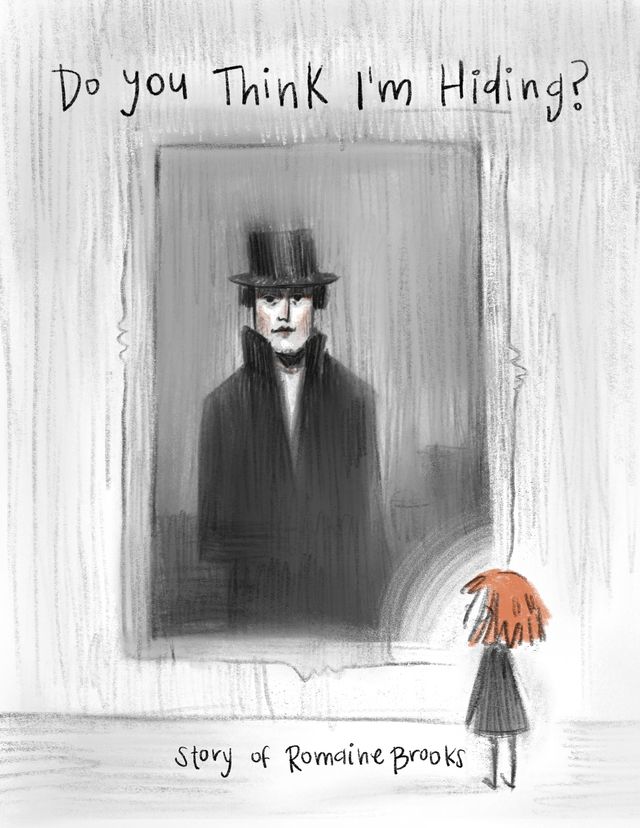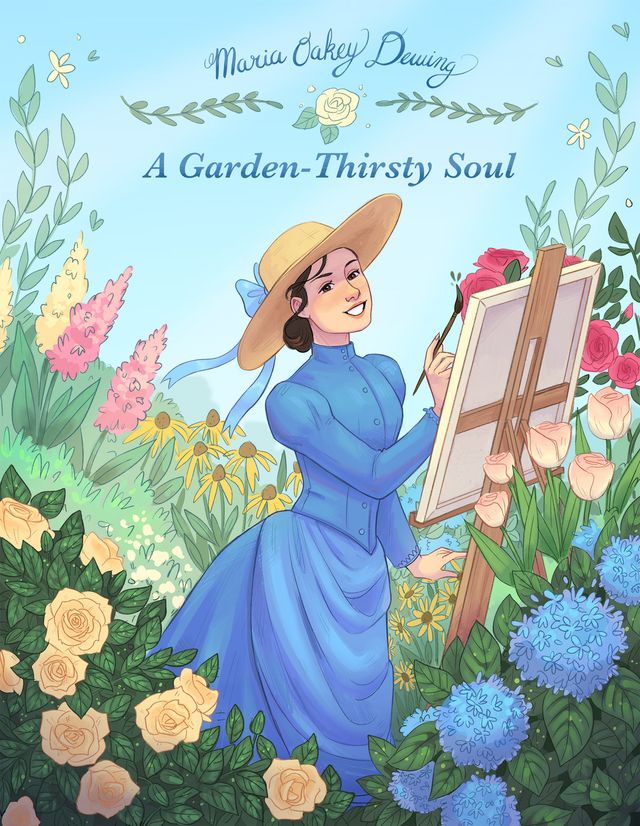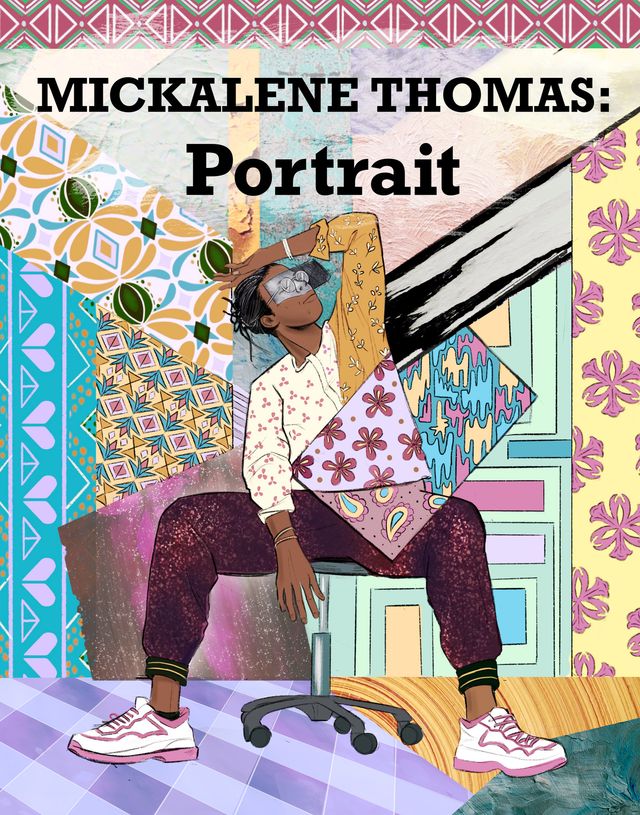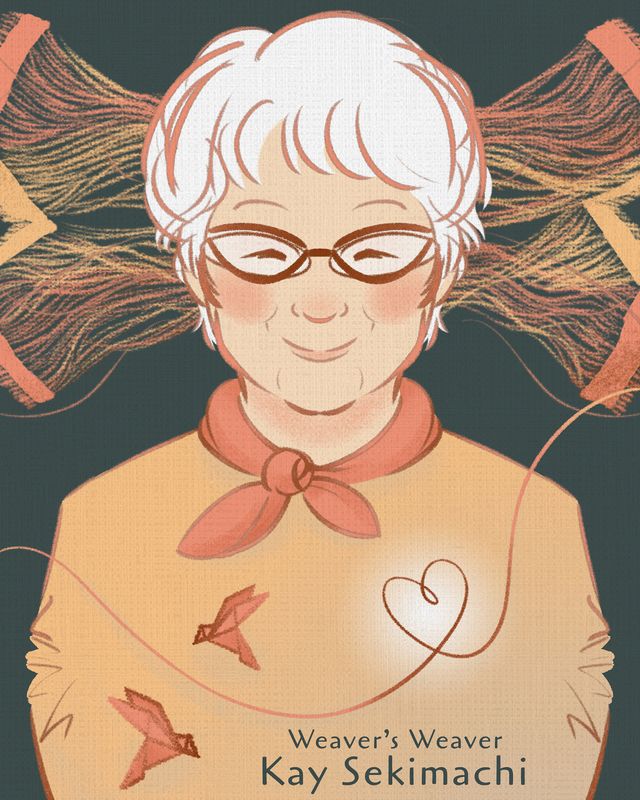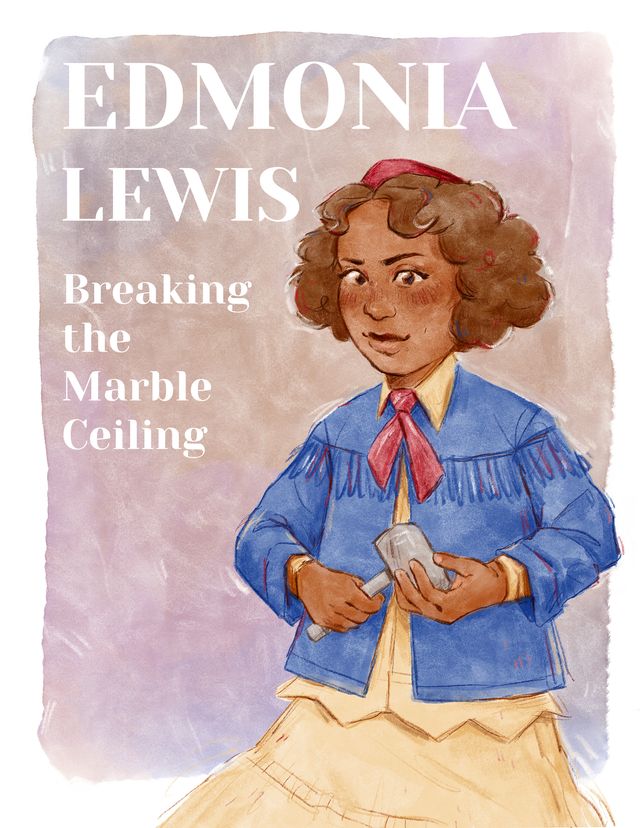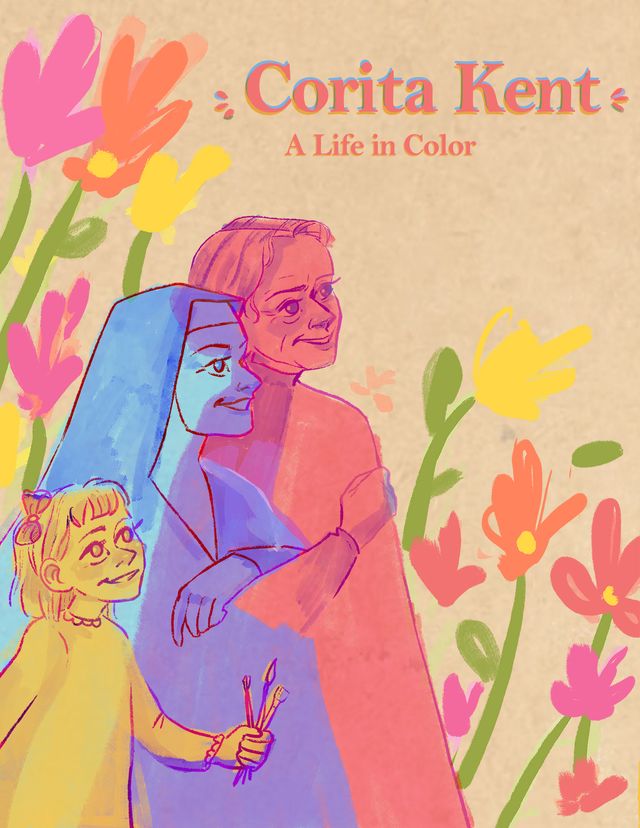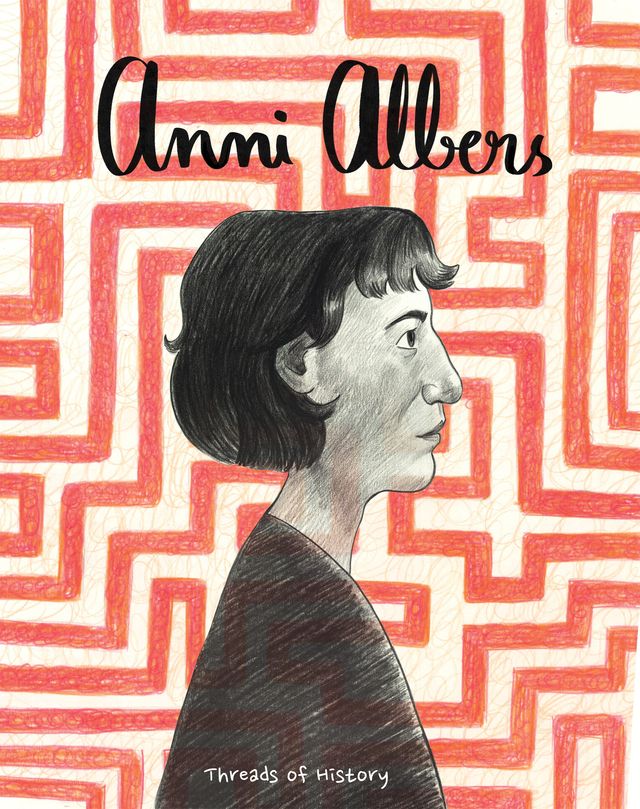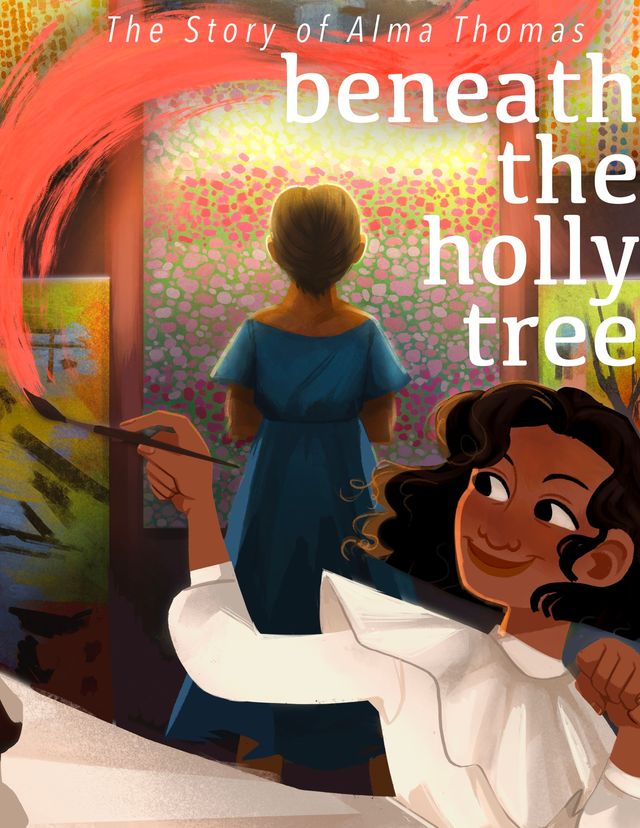This comic is part of a series Drawn to Art: Ten Tales of Inspiring Women Artists that illuminates the stories of ten women artists in the collection of the Smithsonian American Art Museum. Inspired by graphic novels, these short takes on artists’ lives were each drawn by a woman student-illustrator from the Ringling College of Art and Design.
Born in 1898, Berenice Abbott discovered her gift for photography in Paris. When she returned home, she created iconic portraits of buildings and people in New York City, images that still move us to this day.
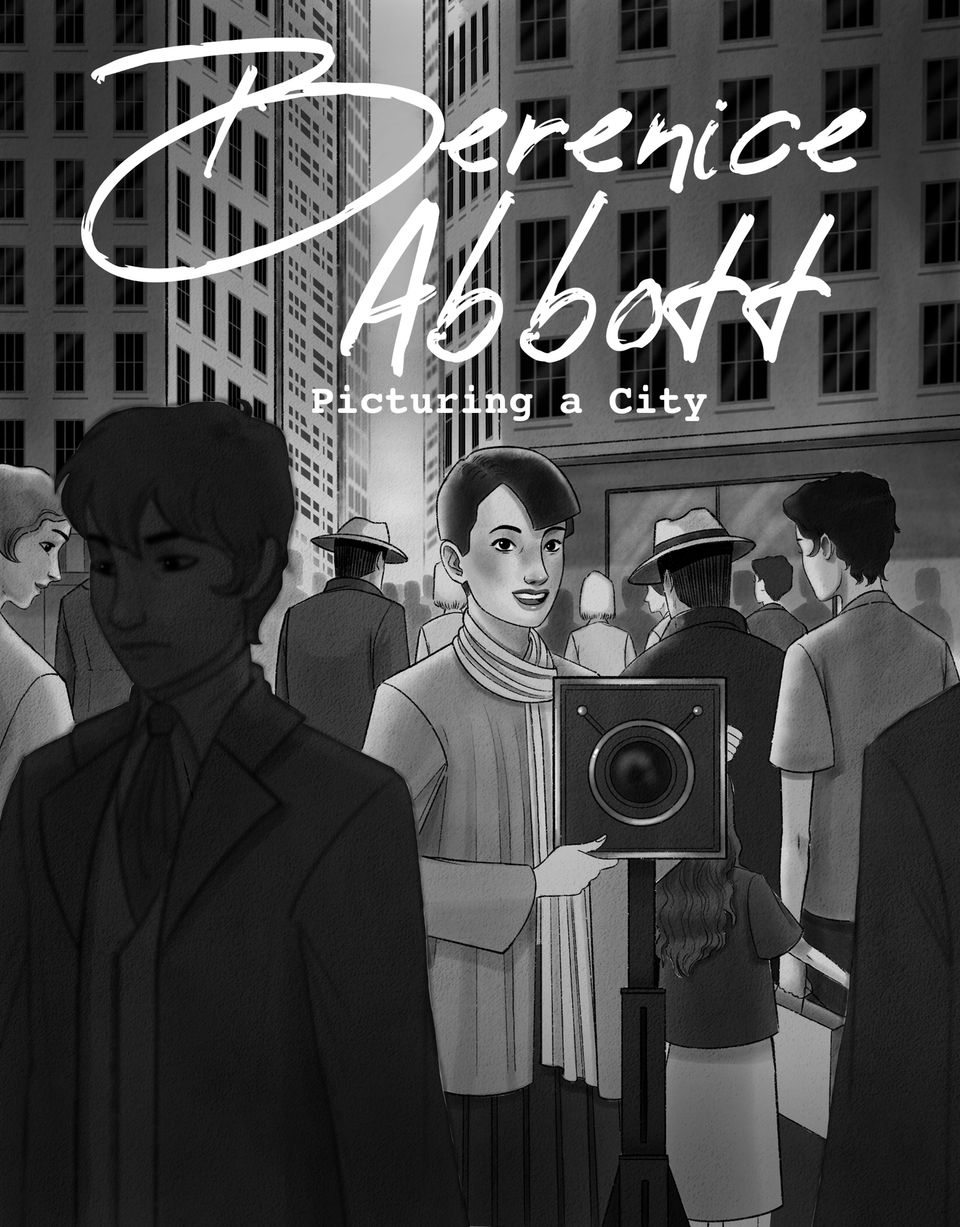
A gray-and-white illustration depicts a bustling cityscape. We stand on a street filled with people all going in different directions. Businessmen in light fedora hats and dark trench coats and other people with their heads and eyes down, hurrying forward. Above them are tall buildings with dark windows in stark rows. The facades of the buildings recede away from us down the street. Facing us is a young woman with short dark hair with a heavy sweep of bangs above one eyebrow. She has big eyes and a bright smile and wears a long scarf, loose flowing jacket, and skirt. She stands behind a large camera on a tripod. Her hands cradle the bottom and side of the lens of the camera, which is pointed straight at us as if she is about to take our photo. Above her at the top of the page, text reads, “Berenice Abbott: Picturing a City."
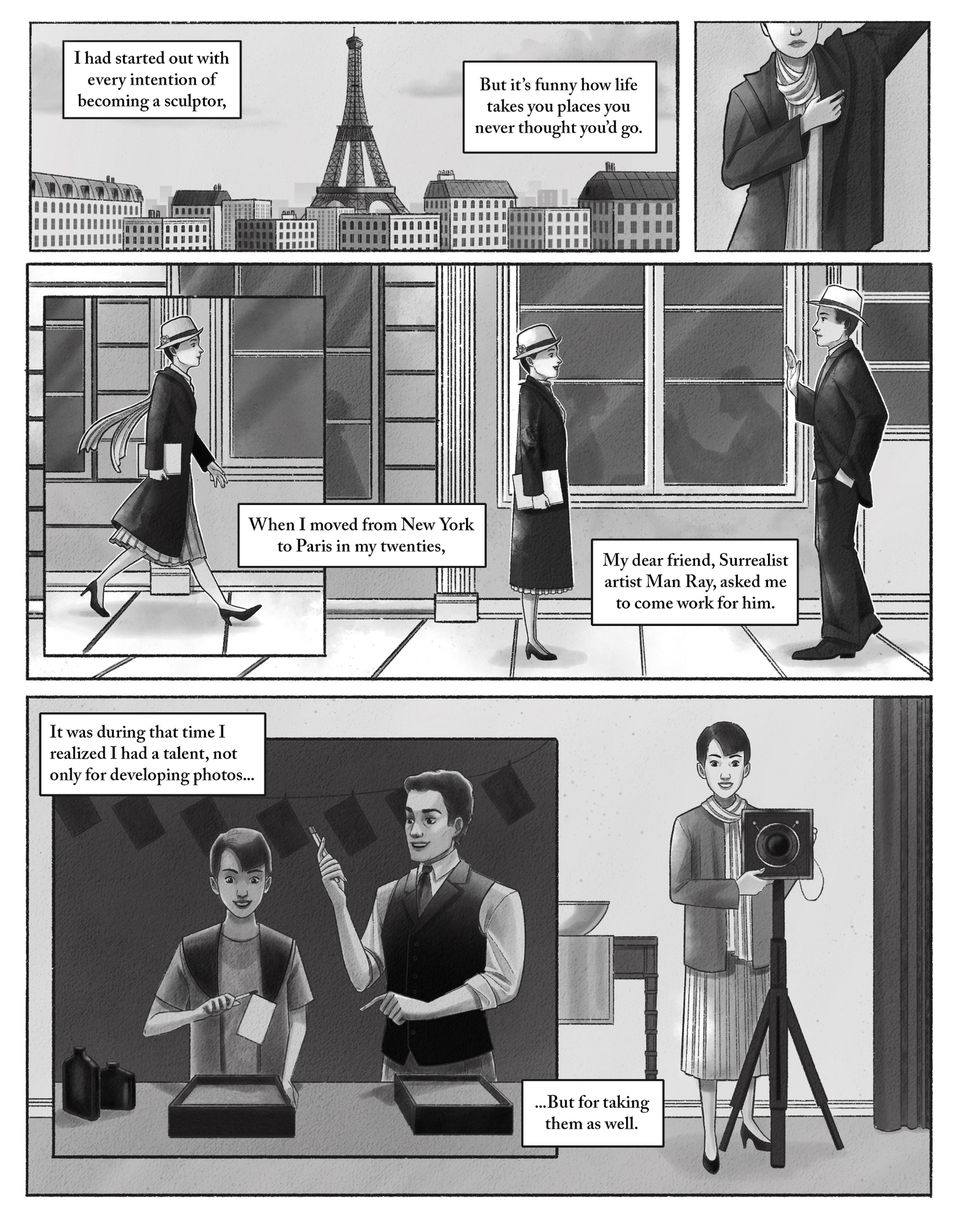
Panel one: A black and white illustration of the Paris skyline with the dark lines of the Eiffel Tower surrounded by the rooftops of low apartment buildings. Text reads, “I had started out with every intention of becoming a sculptor, but it's funny how life takes you places you never thought you'd go.” Panel two: Berenice Abbott puts on her coat, her head and raised arms in her coat sleeve are outside of the panel’s frame. Panel three: Berenice is walking down the sidewalk of a city street in heels, a small, brimmed hat, and a long coat. She is striding purposely forward with a book under her arm and her long scarf flowing behind her. Text reads, “When I moved from New York to Paris in my twenties,” Panel four: Berenice has stopped walking and stands on the sidewalk, smiling, as a young man approaches her with his raised hand in greeting. He is wearing a white fedora hat and a dark suit. Berenice continues her story. Text reads, “my dear friend, Surrealist artist Man Ray, asked me to come work for him.” Panel five: Berenice stands in a dark room in front of a photo-developing tray, two dark bottles are beside her tray. She is holding a pair of small tongs and grasps a piece of white paper by one corner above the tray. A young Man Ray stands beside her in front of his own tray, wearing a tie, vest, and white shirt with rolled up sleeves. He gestures animatedly, a pair of tongs in his raised hand. They are both smiling at the paper Berenice has taken out of the developing solution in her tray, and Man Ray points at it. A series of photos dry on the line behind them. Text reads, “it was during this time I realized I had a talent, not only for developing photos...” Panel six: Berenice stands alone in a room in front of a white wall, a table with a basin is behind her. She's wearing a loose-fitting jacket, a scarf around her neck, and mid-length skirt with heels. She stands behind a large camera on a tripod. The lens of the camera points straight out of the page, as does she. Text reads, “...But for taking them as well.”
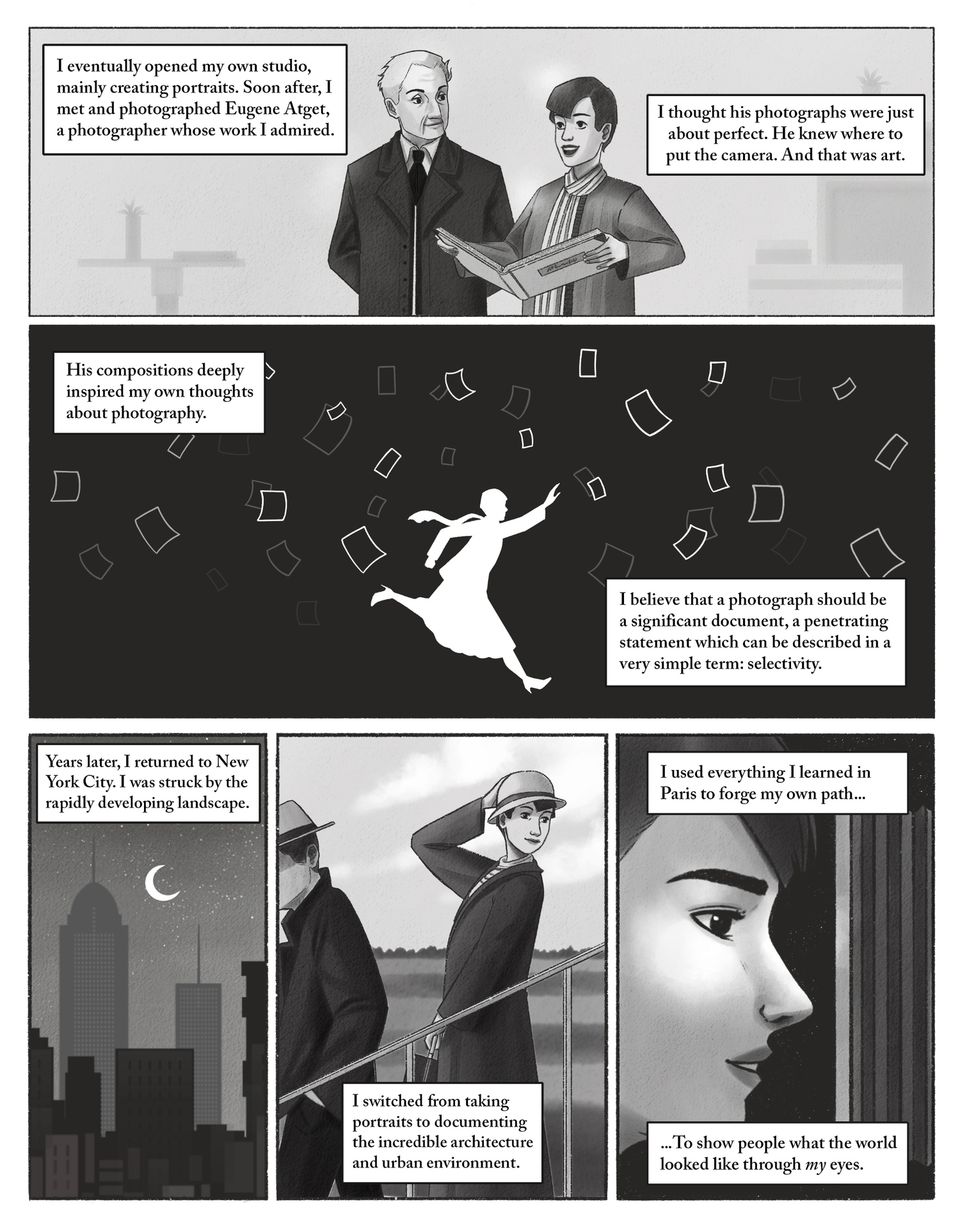
Panel one: Berenice, wearing a coat and a striped scarf, stands next to an older gentleman. She is holding open a large notebook. The gentleman next to her has white hair, dark eyebrows and is wearing a formal suit and tie. He looks over at Berenice inquiringly, head tilted slightly with a small smile. Berenice is smiling widely, excited about the work in her hands. Text reads, “I eventually opened my own studio mainly creating portraits. Soon after, I met and photographed Eugène Atget, a photographer whose work I admired. I thought his photographs were just about perfect. He knew where to put the camera. And that was art.” Panel two: A white, full-length silhouette of Berenice wearing a long skirt against a black background. She is surrounded by the outline of white squares, and she's running to the right side of the page, arm raised, her scarf flying behind her, as she tries to capture one of the white squares in front of her. Text reads, “His compositions deeply inspired my own thoughts about photography. I believe that photographs should be a significant document, a penetrating statement which can be described in a very simple term: selectivity.” Panel three: A black-and-white nighttime sky, studded with stars and a crescent moon above an outline of a city skyline with buildings and towers of different sizes. Text reads, “Years later, I returned to New York City. I was struck by the rapidly developing landscape.” Panel four: Berenice is walking down a ship gangplank holding a bag in front of her. She wears a small, brimmed hat on her head and is looking over her left shoulder, one hand holding her hat in place. Text reads, “I switched from taking portraits to documenting the incredible architecture and urban environment.” Panel four: A close-up of Berenice's face in profile as she looks through the eye of her camera. The light hits her cheek and illuminates her eyes and shows her strong features. Text reads, “I used everything I learned in Paris to forge my own path...to show people what the world looked like through my eyes.”
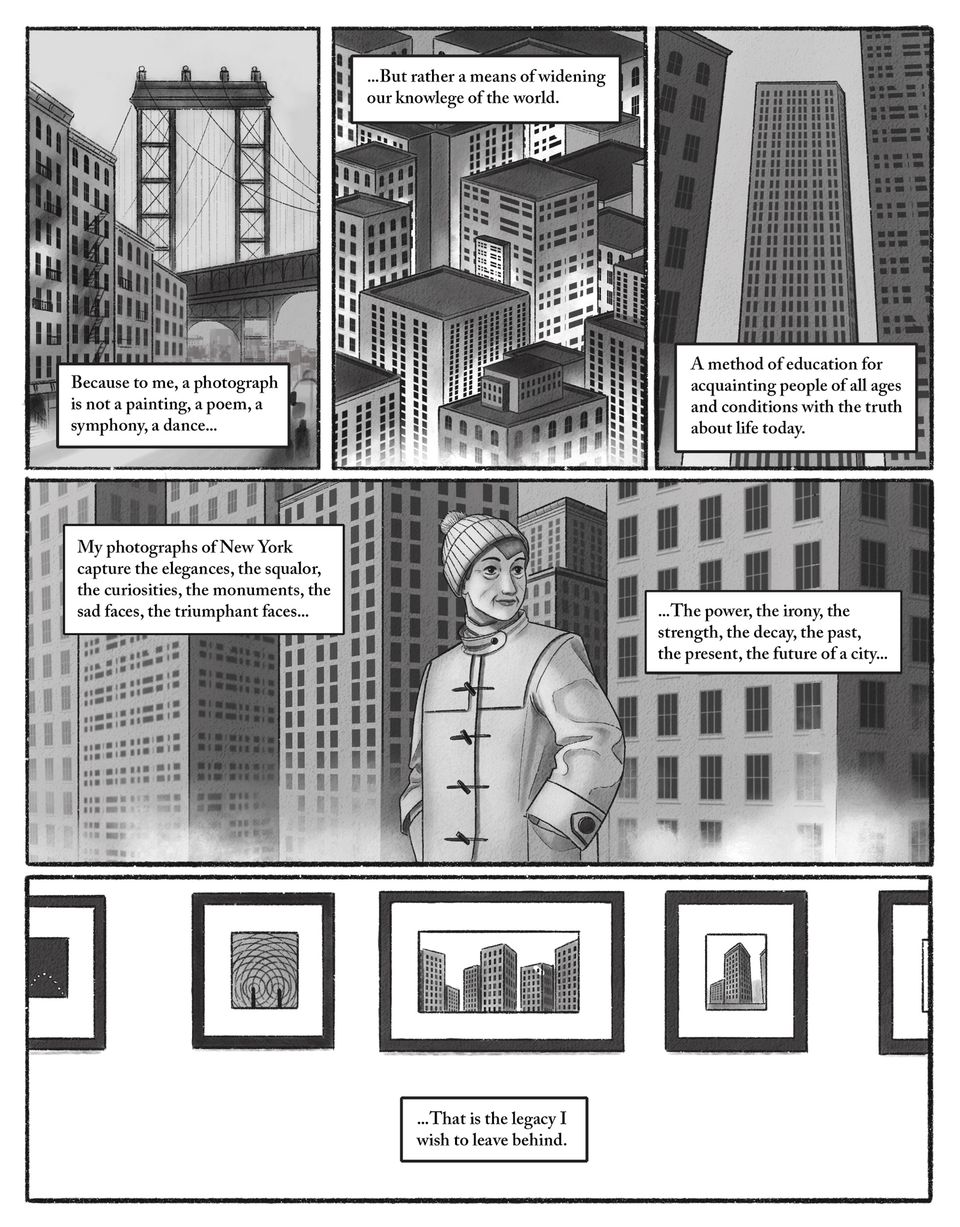
Panel one: The tower, cables, and arches of the Brooklyn Bridge. In the foreground, we see apartment buildings and the lines of the windows, buildings, and architectural features of New York. Text reads, "Because to me a photograph is not a painting, a poem, a symphony, a dance...” Panel two: From above, the tops of square buildings and the repeating geometry of their windows forming patterns like a weaving. Text reads, “...But rather a means of widening our knowledge of the world.” Panel three: The strong lines and windows of three skyscrapers looming from above. Text reads, “A method of education for acquainting people of all ages and conditions with the truth about life today.” Panel four: Berenice Abbott is many years older. She has gray hair and wrinkles and is bundled up in a winter hat with a pom-pom and a coat with toggle buttons. She stands in front of a row of buildings receding at an angle away from her. The repeating pattern of all the buildings and the windows is echoed by the geometry of her jacket and the strong angle of her features. Text reads, "My photographs of New York capture the elegance, the squalor, the curiosities, the monuments, the sad faces, the triumphant faces...The power, the irony, the strength, the decay, the past, the present, the future of a city...” Panel five: A row of black-and-white photos in simple black frames with white matting hanging on a wall. They are precisely lined up on the wall at the same height. The photographs are urban landscapes with the lines and strong geometry that Berenice Abbott is known for in her work. Text reads, “That is the legacy I wish to leave behind.”
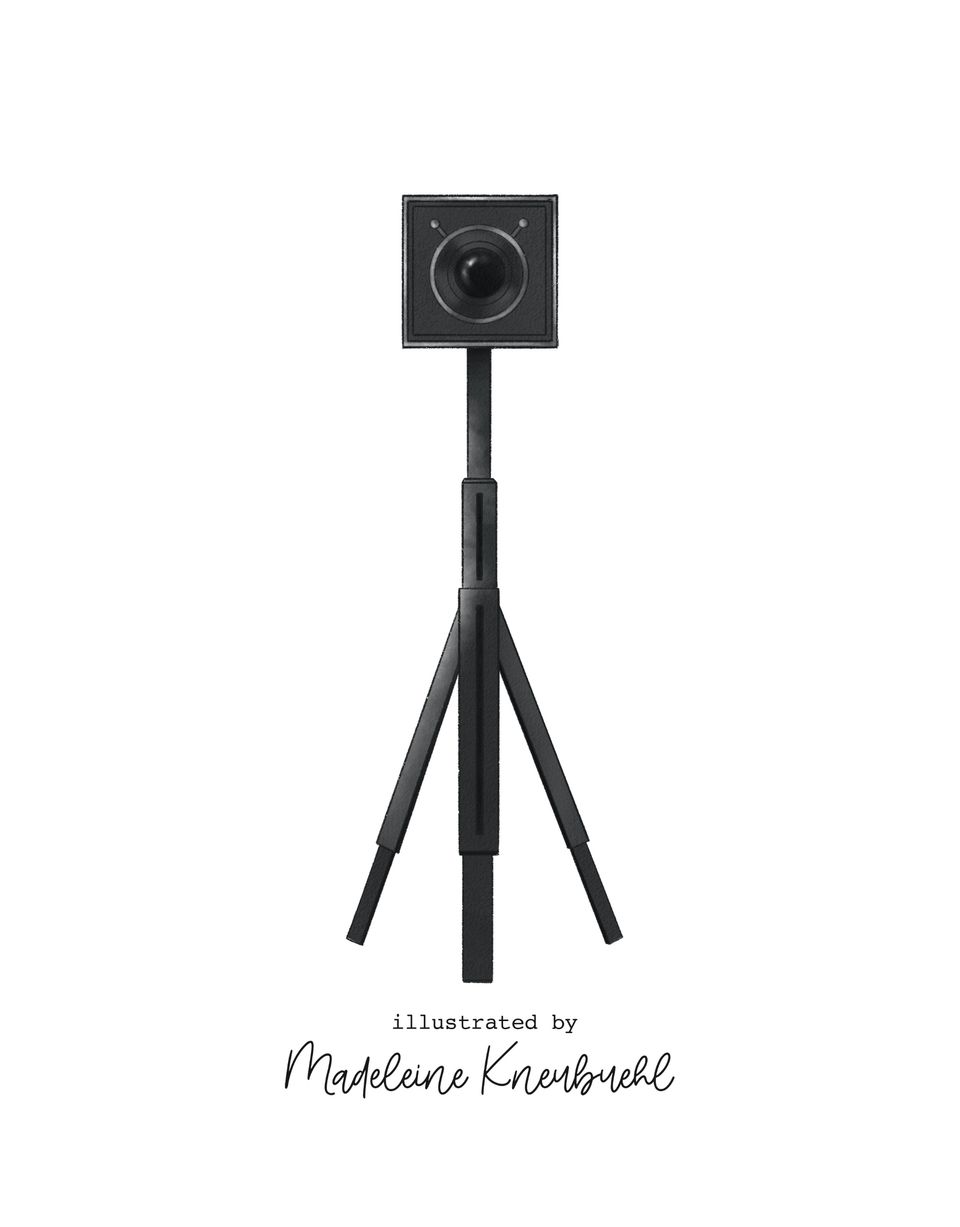
The last page shows a black camera on a white background. It sits on a tripod, and the camera’s large lens looking straight at us. Text reads, “Illustrated by Madeline Kneubheul.”














